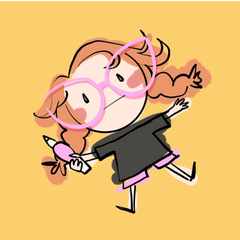Tips For Using Decoration Brush on B&W Manga Background
Introduction
Hello, i am Aseftier and this is my first tutorial!
Drawing manga is enjoyable, but also tiring and time consuming. CSP's decoration brush is very helpful to cut the worktime faster. Here is tips&trick to add decoration brush to B&W Manga!
Prepare The Brush
First, before we go to step by step we need to know the basic of brush and layers.
there is different brush types, ideal brush to add in B&W scene, and the layer styles.
Tipes of Brush based of Color:
-Fullcolor brush. it has their own color so you cant use custom color.
-Double Color Brush. It use background and foreground on color pick. always use Black and White only for this brush.
-Single Color Brush. It only use One color (depends what you choose, transparent or Foreground or Background Color)
Tips to choose the brush we need:
>avoid using painting, transparent or blended brush because it not suitable for black and white manga >always maintain brush resolution if you work on high resolution artwork. low res brush would give a pixellated look. keep the brush as sharp as possible. >better use single color and double color for monochrome manga and make sure the color pick is black and white. Fullcolor brush only can be used with layer effect [EX only] on the next step.
There is Spraying brush, Ribbon brush (long thing like pattern line, chains, rope, etc) and Random brush. And there is two types of layers.
If you go to raster brush, prepare the brush to have correct size and linestroke.
If you go to ribbon brush you can use the vector so you can edit the brush stroke
(this is not suitable for spray/random brush)
How To Use
The application of the decoration brush to the artwork is very simple. We just stroke the brush to the correct layer. But we still need to know some technical aspect: the brush flow and layers.
Always do roughsketch for composition. even we use decoration brush, we still need to prepare the area we need to stroke the brush.
always do the brush stroke from back to forward. If randomly add the stroke in the middle it would be a bit messed up.
If the drawing need to have prespective, always maintain the brush size match the ratio/prespective.
better separate layer between object and decoration brush, so it easier to edit and not interrupt the main lineart.
.....to avoid this. Creating decoration brush in one layer with the object would be tricky to correct it.
Retouching
NAH ITS DONE! BUT WHY IT DOESN'T MATCH WITH THE STYLE?
There is some different cases:
1) it have different detail with other drawing element.
2) some of them are in different lineweight.
3) or WORST CASE it have different line style.
And the solution is: RETOUCH
There is different way to retouch the brush:
1. trace the entire brush manually (time consuming, but accurate)
so the brush is considered as a sketch. so you need to trace it on the new layer.
2. edit direct to the brush stroke manually. You can edit, add, or remove or give some block or crosshatching on it directly so it blend with the artwork.
3. using some Filter and Layer Style features (need technical knowedge and some layer style effect is in EX)
you should check lineart should keep the black only with [Edit]>[convert brightness to opacity]
ADJUST THE LINEWEIGHT:
You can use [Filter]>[Correct line]>[Adjust line width]
There is two option in adjust menu (Thicken&Narrow). Use it to match your lineweight. The bigger the point, the thicken/narrow it get
REDUCE OVER-DETAILS
you can select area you need to remove the details then click [Filter]>[Correct Line]>[Remove Dust...]. The bigger the point, the more it reduced
CONVERT FULLCOLOR BRUSH TO B&W BRUSH
you can use fullcolor brush with this setting (EX only) make sure you use it on separate layer.
[Layer Property]>[Effect]>[Extract Line] or you can use [Edit]>[Tonal Correction]>[Binarization] as alternative but not better like Extract Line feature.
Make sure you adjust the threshold to reduce some details, and you can go adjust line width and remove dust like a previous step
Finishing: Adding Screentone/Color
Before screentone and color it, you should check the lineart first. You can change the paper layer to other color so you can see the white area.
Other than [Convert Brightness to Opacity], you can use [Layer Property]>[Expression Color] and check the black square then you can go [apply expression color of preview]
Here is the the screentoned artwork for this tutorial. Thanks to read my tips!
























Comment